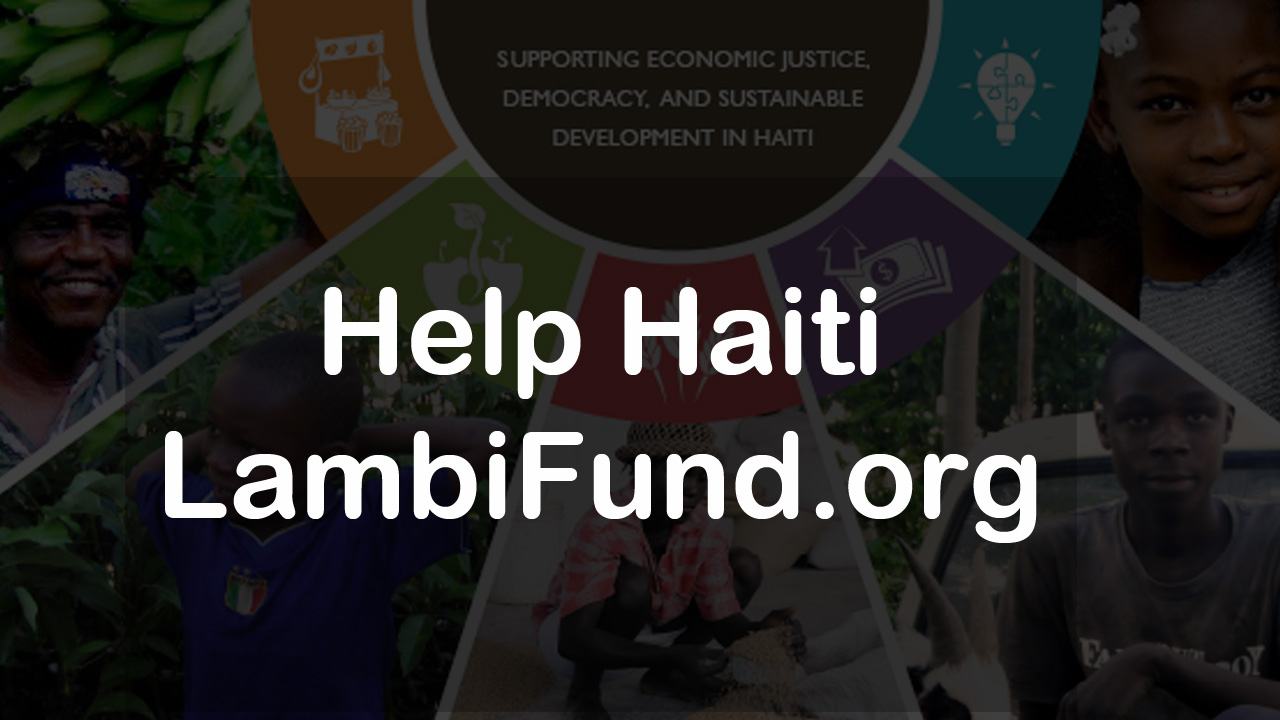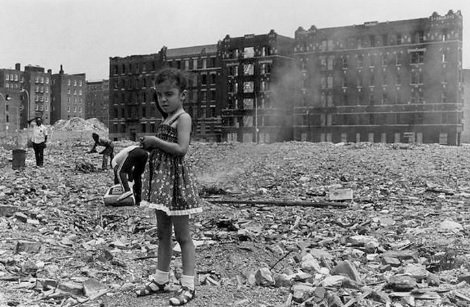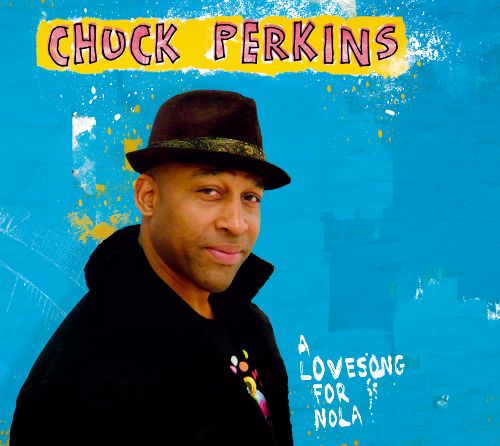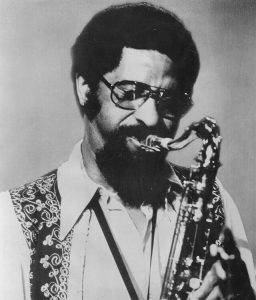Afro-Cuban culture, Blog, Cuba, Cuban Jazz, Latin Jazz, Video and audio
One of the highlights of my March 2016 trip to Cuba was visiting the small city of Güines, a major historical center of Cuba’s sugar industry, 50 kilometers southeast of Havana.
The city center has a beautiful town square and many handsome private homes and is the birthplace of not one but two Cuban music legends: Tata Güines and Arsenio Rodríguez.
By an accident of fate, the two were raised so closely together, if you have a good arm you could throw a rock from Tata Guines’s childhood home, (a one room former slave cell) to Arsenio’s childhood home, (a small house on the street just beyond the barracks compound.)
Along with Chano Pozo and Patato Valdés, Güines, who was born in 1930, is considered one Cuba’s greatest masters of the tumbadora, the conga drum.
Fortunately, there’s a lot of excellent video of his work.
First, Güines with a group of friends (“Los Amigos”): pianist (Frank Emilio), flautist, (Miguel O’Farril), bassist (Chachuito) and timablero (Guillermo Barreto).
Güines tells a bit of his life story which is followed by a solo
Güines with the legendary rumba group Yoruba Abdado and Changuito (filmed in 2002)
And now, for a lesson from the master.
Spanish and/or French will come in handy here. If not an attentive pair of eyes and ears will help.
Want more instruction?
Good!
Whether you play or are simply someone who loves and is fascinated by the music, this tutorial with Changuito (José Luis Quintana) and Giovanni Hidalgo will change your ears – for the better – forever.
Click here: Inside the Conga
– Ken McCarthy
Jazz on the Tube
P.S. Our unique programming is made possible by help from people like you. Learn how you can contribute to our efforts here: Support Jazz on the Tube
Thanks.

Blog
We put this show together to raise awareness about the urgent need for help for Haiti to aid recovery efforts from Hurricane Matthew.
The group that we have continuously and happily supported for over ten years is LambiFund.org
We also like OxFam and Doctors without Borders. Please specify with your donation that it is for projects in Haiti.
Along with many Haitian people, we specifically DO NOT recommend the American Red Cross or the Clinton Foundation.
Clarifications:
1. The lyric “Jockomo feena nay” which appears in four of the songs played during the show is a classic New Orleans lyric. Exactly what it means is in some debate. Many linguists agree it follows a West African language pattern and is probably of French Creole origin.
2. The most important thing to take away from the show is that 99%+ of the time when someone refers to the French Creole culture of New Orleans, they’re talking about the 10,000+ refugees from San Domingue (Haiti) who doubled the population of New Orleans in the early 1800s and brought a flood of cultural institutions to the city.
Here are some examples of what the French Creoles brought to New Orleans with them from San Domingue:
a. a love of music
b. well developed institutions for musical education
c. opera (New Orleans and New York were the first to have opera houses in North America)
d. concert halls
e. a tradition of elaborate balls, parties, masquerades (raising “good times” to a high art)
f. a passion for rich, delicious, elaborately prepared food
g. an appreciation for fine architecture including skilled ironwork, plaster work, and finish carpentry
h. Parading
i. Skull and Bone gangs
j. Elements that make up Mardi Gras Indian culture (beadwork, parading, “masking”, drumming, French Creole chants)
3. When I say that people like Dr. John, Sidney Bechet and Fats Domino are French Creole, I don’t mean they were born in Haiti, but I do mean their ancestors were and they were reared in the music loving, good time culture the refugees from San Domingue brought with them to New Orleans.
When someone like Dr. John says that his ancestors were French and came to New Orleans in the early 1800, odds are extremely good (at least 99+%) that his ancestors came from Haiti or from Eastern Cuba (Oriente) after fleeing to Cuba after the Haitian Revolution.
By the way, how French Creole was Fats Domino? He spoke Creole at home before he learned English.
I misspoke about Fats’ musical partner Dave Bartholomew. He may have had some Creole ancestry, but I don’t know his exact genealogy and Bartholomew is an English surname.
That said, many musicologists believe the musical culture of New Orleans is so dynamic because it is a fusion of the rough-and-ready “uptown” players like Louis Armstrong and Dave Bartholomew – with the more elegantly schooled Creole players like Sidney Bechet and Fats Domino.
4. Of course, there are other French speakers in Louisiana, the Cajuns, but they descend from French Canadians, another rich and wonderful culture, but very different from the French Creoles of San Domingue.
5. Chuck Perkins’ band is, in fact, called “The Melody Makers.” I was looking at the first run of his first CD and it had a typo on it which was the source of my confusion.
Final notes:
Without the Haitian Revolution, there would be no America as we know it for three reasons:
1. By defeating Napoleon’s army in Haiti and taking over the country, the Haitians forced Napoleon into a situation where he decided to sell the middle of what is now the United States to the U.S. government.
Louisiana, Arkansas, Iowa, Missouri, Kansas, Oklahoma, and Nebraska, and parts of Minnesota, New Mexico, South Dakota, Texas, Wyoming, Montana, and Colorado might be French today had it not been for the Haitian Revolution.
2. Haiti was the first country in the Western Hemisphere to ban slavery and did so more than 30 years before the “civilized” countries like the United Kingdom did.
3. French Creole refugees from San Domingue (now Haiti) made New Orleans culture and New Orleans culture – especially the musics of jazz, R & B, rock and roll, and funk – form an essential part of what we consider American culture.
We put this material together to raise awareness about the urgent need for help for Haiti to help recovery efforts from Hurricane Matthew.
The group that we have continuously and happily supported for over ten years is LambiFund.org
The group that we have continuously and happily supported for over ten years is LambiFund.org
– Ken McCarthy
Jazz on the Tube
P.S. Our unique programming is made possible by help from people like you. Learn how you can contribute to our efforts here: Support Jazz on the Tube
Thanks.
Afro-Cuban culture, Blog, Puerto Rico, The Cuba-US connection, Video and audio
Filmed October 9, 2016 at La Casita de ChemaIf you can’t make it to Cuba, but you can make it to the Bronx…
At Jazz on the Tube we focus on Cuba, but the Caribbean is full of musical treasure islands: Trinidad, Jamaica, Haiti, the Dominican Republic, and that’s just scratching the surface.
One place is particularly important to the development American music: Puerto Rico.
Puerto Rico? Yes, Puerto Rico
The contribution of Puerto Rican musicians to the development of American music is very deep and rich, but here are a few highlights:
1. When the pioneering black American bandleader James Reese Europe needed musicians for his band to take to Europe to perform for the troops and civilians during World War I he went to Puerto Rico to recruit his reed players.
It was the first exposure Europeans had to Afro-American band music and as Noble Sissle said, it was this band that first brought the “Jazz germ” to France way back in 1918.
James Reese Europe: “We won France by playing music which was ours and not a pale imitation of others, and if we are to develop in America we must develop along our own lines.” The reed section that helped pull off this creative feat came from Puerto Rico.
2. Puerto Rican born and educated Juan Tizol is best known as a virtuosic trombonist and the composer of jazz standards like “Caravan” and “Perdido,” but beyond that he was Duke Ellington’s “secret weapon” during the particularly fertile period of Ellington’s career from 1929 through 1944.
Tizol was not only the “rock” of the trombone section (his technique was flawless and his tone blended beautifully with the reed section), he also worked closely with Ellington on arrangements and was the one who actually produced the band’s charts.
3. Tito Puente, El Ray (“The King”), what more can we say?
A Nuyorican, a Puerto Rican born in New York City, Puente was not only one of the three “Mambo Kings” of the legendary Cuban-dominated Palladium Ballroom, he was also the most important figure in the development and evolution of Latin Jazz in North America and around the world as a performer, composer, bandleader, and educator.
Puente was the great ambassador of Latin music. His life mission was summed up beautifully in the words of one his compositions which became a hit for Carlos Santana:
“Oye como va mi ritmo”…”Listen to how my rhythm goes.”
Bomba and Plena
Bomba and Plena are Puerto Rican “roots” musics.
To my heart, mind and ear there are as significant to the world’s music culture as Cuba’s rumba.
Like the Cuban rumba, they are a living examples of “music in, by, and for community. ”
Very short history:
Bomba is the older form. It dates back to the first Africans in Puerto Rico in the 17th century. It’s both a political music and a social music for celebration and community. It received influences from around the Caribbean including Cuba, Haiti and the Dominican Republic.
Follkways Records says Bomba utilizes sixteen different rhythms. The instruments are the “subidor” or “primo” (a big barrel shaped drum), maracas, and the “cua” or “fua”, two sticks played against the wood of the barrel drum or a piece of wood. Dance improvised in partnership with the drummers is an essential part of the art.
Plena developed from bomba in the beginning of the 20th century in southern Puerto Rico. It has one primary rhythm and is characterized by the use of the “pandereta,” a round drum that comes in a variety of sizes. The improvising soloist drum, the smallest and highest pitched, is the “requinto.”
Plena lyrics talk about the news, political protest, and are often satirical.
The Bomba and Plena you’re listening to here went through TWO crucibles:
First, the experience of Africans kidnapped, terrorized and brought to Puerto Rico to work in the sugar fields and mills of the Caribbean.
Second, the experience of Puerto Ricans moving from their tropical, largely agricultural, Spanish-speaking island to New York City, a cold, Anglo, urban environment where they were discriminated against and lived in areas of the city that failed to receive basic services other neighborhoods took for granted.
The South Bronx of the 70s and 80s, a community which was and is home to tens of thousands of Puerto Ricans, became a global symbol of government neglect and social despair.
 It was in this environment that Jose Soto (“Chema”), his family and community built the first “casita” in New York City on a rubble strewn vacant lot on Brook Avenue and 158th Street across the street from his apartment in the South Bronx.
It was in this environment that Jose Soto (“Chema”), his family and community built the first “casita” in New York City on a rubble strewn vacant lot on Brook Avenue and 158th Street across the street from his apartment in the South Bronx.
The casita (small, informal house) and surrounding garden was called the Rincon Criollo and is also popularly known as the La Casita de Chema. (The original casita was moved a block away a few years ago.)
Casitas are now found throughout the South Bronx and there’s even one in East Harlem.
They are centers of community life for all generations and, especially in the case of La Casita de Chema, important centers for education and performance.
The video above was filmed the final day of Bomplenazo 2016, a biannual, multi-day event hosted by Hostos Community College in the Bronx.
The place: La Casita de Chema
The date: October 9, 2016
The event was scheduled to go from noon to 5 PM.
I arrived at around 1 PM and when I left at 6 PM the place was still rocking.
If you’re in New York City or planning to visit, finding events like this is not easy.
My best advice: Use the Jazz on the Tube Afro-Latin music venues in New York City list and visit each link. This will improve your odds of catching something spectacular, and all-but-unadvertised.
Five books that will help you dig deeper into the astonishing creative fertility of Puerto Rico and the Puerto Rican people:
Puerto Rican Pioneers in Jazz: Bomba Beats to Latin Jazz
Basilio Serrano
Tito Puente and the Making of Latin Music
by Steven Loza
The Book of Salsa: A Chronicle of Urban Music from the Caribbean to New York City
Cesar Miguel Rondon
The Latin Tinge: The Impact of Latin American Music on the United States
John Storm Roberts
Latin Jazz: The First of the Fusions
John Storm Roberts
More from La Casita de Chema
The original Rincon Criollo (aka “La Casita de Chema”) June 1991
– Ken McCarthy
Jazz on the Tube
Afro-Cuban culture, Blog, Cuba, Cuban Jazz, Jazz on the Tube Interview, Latin Jazz, The Cuba-US connection, Video and audio
Interview
Download the mp3 here
Ken talks with jazz veterans Jane Bunnett and Larry Cramer about their musical odyssey in Cuba which began over 30 years ago in 1982.
You will not find North Americans anywhere who have a deeper connection with the island, its music and its musicians.
If you’re at all interested in Cuba and its music, lock the door, turn off the ringer on your phone and dig in. Don’t miss this.
Two excerpts from the documentary “Cuban Odyssey: Spirits Of Havana” about Jane and Larry’s musical adventures in Cuba.
Jane and Maqueque, an extraordinary band of young Cuban musicians recording and on tour in North America.
You can learn more about Maqueque here.
– Ken McCarthy
Jazz on the Tube
P.S. Our unique programming is made possible by help from people like you. Learn how you can contribute to our efforts here: Support Jazz on the Tube
Thanks.

Blog
How it works:
1. Give to the group of your choice
2. Send me the receipt with your address
3. Bonuses
* If you contribute $100 or more, you will get a signed copy of Chuck’s CD “A Love Song for Nola”
* If you contribute $500 or more, you and three friends will get taken around New Orleans by Chuck personally. This fee covers Chuck’s services as a guide only. (This is a great way to get to know the REAL New Orleans in ways no tourist ever could in even twenty separate visits.)
We recommend these groups:
1. LambiFund.org (Haitian Based) – They focus on economic development in the
countryside.
2. Doctors without Borders (specify that your donation is for Haiti)
3. Oxfam (specify that your donation is for Haiti)
We specifically DO NOT recommend the American Red Cross and based on their previous experience with the organization, Haitians have requested that people not give to them to help Haiti
We also specifically advise against giving money to any fundraising efforts fronted by the Bush or Clinton families.
Steps:
1. Donate
2. Send your receipt to ken@jazzonthetube.com.
3. You will get a signed CD for donations of $100 or more and a night on the town with Chuck with Chuck as your guide for $500 or more
But you must send us your receipt so we know who you are and how to get in touch with you.
Make sure you address and phone number are included
 Haitians grow most of their own food. The hurricane
Haitians grow most of their own food. The hurricane
destroyed the entire fall crop in the southwestern
peninsula of the island.Follow up links
* Interview with John Swenson author of “New Atlantis” about how the musicians of New Orleans were essential for bringing the city back to life.
* Chuck’s club: Cafe Istanbul – New Orleans
* Chuck’s radio show “The Conscious Hour” – WBOK 1230 AM
Next steps
1. Donate to a group doing relief work in Haiti. We like the Lambi Fund, Doctors without Borders and Oxfam. (Along with the people of Haiti, we specifically advise AGAINST giving money for Haiti relief to the American Red Cross or any group connected to the Bush or Clinton families.)
2. Send your receipt to ken@jazzonthetube.com.
3. You will get a signed CD for donations of $100 or more and a night on the town with Chuck with Chuck as your guide for $500 or more
Send us your receipt so we know who you are and how to get in touch with you.
Make sure you address and phone number are included
– Ken McCarthy
Jazz on the Tube
Blog, Cuba, Jazz on the Tube Interview
By Gabriela Resto-Montero
It was almost as if William Sabourin O’Reilly had to look away from Cuba to see it more clearly. Sabourin, a documentarian who is based in New Orleans, hasn’t lived in his home country for 17 years but the island nevertheless has become the central focus of his film “Código Color, Memorias,” which premieres at the New Orleans Film Festival Oct. 15.
The short film manages a conversation about race on the island and the prejudices that were in place leading up to the revolution.
“That taboo has existed for many years, it was said that [racism] was eradicated in 1964 so you, in 1994, can’t say that there’s prejudice because that’s the revolution,” Sabourin said. “The topic is not discussed and it was swept under the carpet so that you wouldn’t get in trouble. The people who love you would say ‘Shhh, be quiet,’ and created that habit. People don’t speak.”
Despite some apprehension that broaching such a controversial topic might get himself censored, Sabourin shot the film in the hopes of starting a dialogue where none has existed for nearly 60 years. Sabourin’s status as an expatriot provided the critical distance needed to both understand the nuances of race on the island and highlight where they are uniquely Cuban.
“In so far as I’ve lived here for many years, and that I’ve remained close to Cuba, and that I’m black, that I come from humble beginnings,” he said. “I developed as a filmmaker in the United States, I’m seeing it through the prism of the United States.”
Sabourin moved to Virginia in 1999 as a newlywed. There in Petersburg the documentarian found work in construction as he tried to learn English. Not fond of the snowy winters in Virginia, Sabourin jumped at the chance to study in Louisiana.
He transitioned into work as fulltime filmmaker on a wild gamble to stay in New Orleans as Hurricane Katrina hit. He gathered the equipment that he’d saved up to buy during his work broadcasting horse races and recorded as much as he could of the storm.
“I stayed for five days recording everything that crossed my horizon,” he said. “Until I ran out of resources–water, food, and film.” Once he evacuated to Kentucky, Sabourin and his old team from the racetrack edited the footage and published a DVD that he sent to everyone in his personal phone book.. The resulting footage landed him work on documentaries for everyone from HBO to the History Channel to Spike Lee.
Along with his colleagues, Sabourin founded Tungsten Monkey Films to produce more independent projects. Among them, a feature-length on Santiago de Cuba’s annual Carnaval competitions called “La Oruga y La Mariposa (The Caterpillar and the Butterfly)” due out next year. Here, too, Sabourin sees his home country with new eyes.
Both “La Oruga y La Mariposa” and “Código Color, Memorias,” which premiered in Cuba last year, come at a time when the warming relationship between the U.S. and Cuba has fed public curiosity about life on the island. Although “Código Color, Memorias” documents Cuba on the verge of revolution, it’s premiering as the nation once again finds itself on the cusp of a great political change when the lessons learned in generations past might be instructive.
“It’s been almost 60 years with the same ideology and there are many young people, as they say in the United States, ‘millenials,’ who hardly know Fidel Castro because he’s been ill,” said Sabourin, who is 44. “They don’t know the Fidel that I knew, who was an active person.”
Sensitive subject or not, the film was broadcast on national Cuban television and discussed by a panel of experts last April. Now, Sabourin hopes that students in the United States and across Latin America can watch the film and discuss their own experiences and realities.
“What we wanted was to start a modest dialogue between between the young and not-so young,” he said.
You can listen to the full-length Jazz on the Tube interview with William Sabourin in Spanish below.
Interview
Download the mp3 here
Interview excerpts
On hardship in Cuba in the 1990s:
“I was 17 when the Berlin Wall fell. That’s when life started to change, when we had scarcity because we had been completely subsidized by the Communists. From one day to the next our income fell by 80 percent. External forces, like the U.S. blockade, intensified and that really turned the screw. Zero commerce, zero loans, we were between a rock and a hard place–we either had to give up or keep going. That’s when social problems started to germinate, including racial ones.”
On how race intensified income inequality:
“People with lighter complexions came to the United States, came to Miami. When the wall fell these people, light-skinned people with family in Miami, had access to money that us black people didn’t have because we didn’t have any family outside of the country. That intensified the differences, that’s when I felt it in the 1990s. There was confraternity in school but on the street there was a certain racial and political tension. People were wary of the economic and political situation. If you were hungry you couldn’t say anything because if you did then you were a counter-revolutionary.”
On the economic impact of normalizing diplomatic relations between the U.S. and Cuba:
“Obama goes to Cuba and people think that in two weeks it’s going to be like Miami Beach and that’s where you get disappointment. Looking at it clearly, things are changing slowly and with patience. We’re not going to go from being Cuba to being Hawaii.”
On the social changes taking place in Cuba:
“I’ve noticed some acute changes for the better that have had unexpected consequences. Now there are a lot of us Cubans who have lived outside of Cuba for many years, for political reasons but mostly for economic ones. People come to the United States and learn about capitalism then go back to Cuba and buy a building to create a business and that creates a difference in income that was not known before. There’s development, they paint houses, and you can see the contrast. People start to sell historic homes to better their lives but then in that house where seven people used to live there now lives one and that displaces people and the community loses.”
– Gabriela Resto-Montero
Jazz on the Tube
P.S. Our unique programming is made possible by help from people like you. Learn how you can contribute to our efforts here: Support Jazz on the Tube
Thanks.






